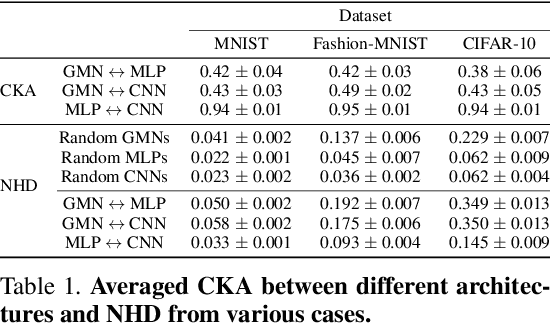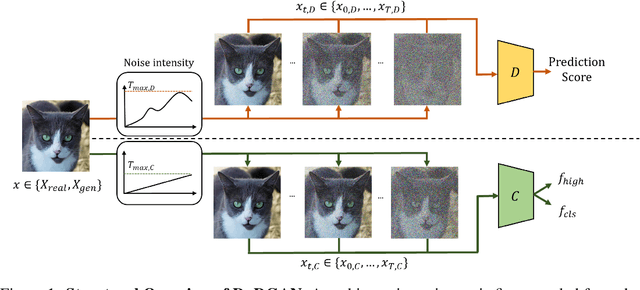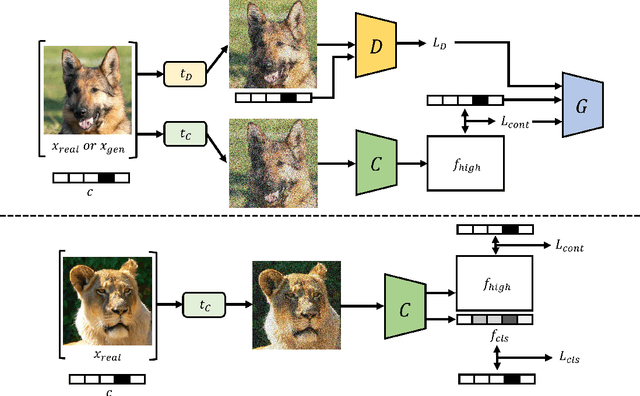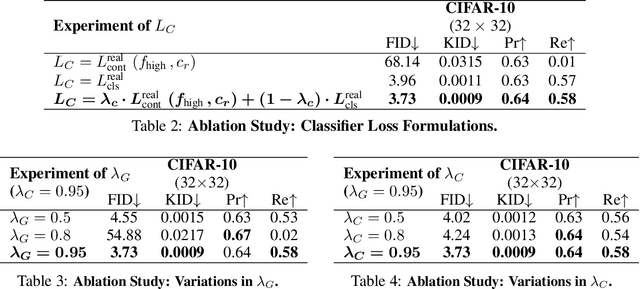Taesun Yeom
Post-training quantization of vision encoders needs prefixing registers
Oct 06, 2025Abstract:Transformer-based vision encoders -- such as CLIP -- are central to multimodal intelligence, powering applications from autonomous web agents to robotic control. Since these applications often demand real-time processing of massive visual data, reducing the inference cost of vision encoders is critical. Post-training quantization offers a practical path, but remains challenging even at 8-bit precision due to massive-scale activations (i.e., outliers). In this work, we propose $\textit{RegCache}$, a training-free algorithm to mitigate outliers in vision encoders, enabling quantization with significantly smaller accuracy drops. The proposed RegCache introduces outlier-prone yet semantically meaningless prefix tokens to the target vision encoder, which prevents other tokens from having outliers. Notably, we observe that outliers in vision encoders behave differently from those in language models, motivating two technical innovations: middle-layer prefixing and token deletion. Experiments show that our method consistently improves the accuracy of quantized models across both text-supervised and self-supervised vision encoders.
On the Internal Representations of Graph Metanetworks
Mar 12, 2025



Abstract:Weight space learning is an emerging paradigm in the deep learning community. The primary goal of weight space learning is to extract informative features from a set of parameters using specially designed neural networks, often referred to as \emph{metanetworks}. However, it remains unclear how these metanetworks learn solely from parameters. To address this, we take the first step toward understanding \emph{representations} of metanetworks, specifically graph metanetworks (GMNs), which achieve state-of-the-art results in this field, using centered kernel alignment (CKA). Through various experiments, we reveal that GMNs and general neural networks (\textit{e.g.,} multi-layer perceptrons (MLPs) and convolutional neural networks (CNNs)) differ in terms of their representation space.
Fast Training of Sinusoidal Neural Fields via Scaling Initialization
Oct 07, 2024Abstract:Neural fields are an emerging paradigm that represent data as continuous functions parameterized by neural networks. Despite many advantages, neural fields often have a high training cost, which prevents a broader adoption. In this paper, we focus on a popular family of neural fields, called sinusoidal neural fields (SNFs), and study how it should be initialized to maximize the training speed. We find that the standard initialization scheme for SNFs -- designed based on the signal propagation principle -- is suboptimal. In particular, we show that by simply multiplying each weight (except for the last layer) by a constant, we can accelerate SNF training by 10$\times$. This method, coined $\textit{weight scaling}$, consistently provides a significant speedup over various data domains, allowing the SNFs to train faster than more recently proposed architectures. To understand why the weight scaling works well, we conduct extensive theoretical and empirical analyses which reveal that the weight scaling not only resolves the spectral bias quite effectively but also enjoys a well-conditioned optimization trajectory.
DuDGAN: Improving Class-Conditional GANs via Dual-Diffusion
May 24, 2023



Abstract:Class-conditional image generation using generative adversarial networks (GANs) has been investigated through various techniques; however, it continues to face challenges such as mode collapse, training instability, and low-quality output in cases of datasets with high intra-class variation. Furthermore, most GANs often converge in larger iterations, resulting in poor iteration efficacy in training procedures. While Diffusion-GAN has shown potential in generating realistic samples, it has a critical limitation in generating class-conditional samples. To overcome these limitations, we propose a novel approach for class-conditional image generation using GANs called DuDGAN, which incorporates a dual diffusion-based noise injection process. Our method consists of three unique networks: a discriminator, a generator, and a classifier. During the training process, Gaussian-mixture noises are injected into the two noise-aware networks, the discriminator and the classifier, in distinct ways. This noisy data helps to prevent overfitting by gradually introducing more challenging tasks, leading to improved model performance. As a result, our method outperforms state-of-the-art conditional GAN models for image generation in terms of performance. We evaluated our method using the AFHQ, Food-101, and CIFAR-10 datasets and observed superior results across metrics such as FID, KID, Precision, and Recall score compared with comparison models, highlighting the effectiveness of our approach.
 Add to Chrome
Add to Chrome Add to Firefox
Add to Firefox Add to Edge
Add to Edge